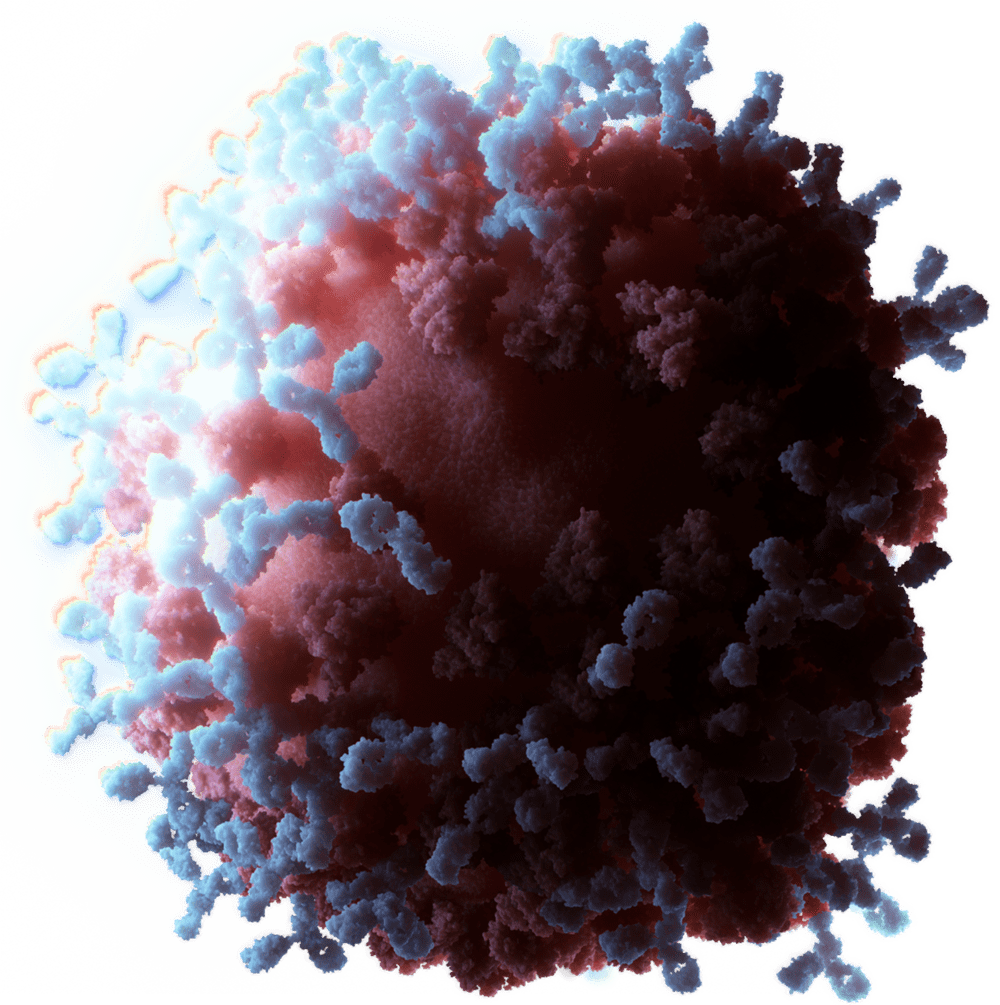 |
Neil King
Assistant Professor of Biochemistry
B.S. 2004, Northwestern University
Ph.D. 2010, UCLA
|
Overview: Designing protein-based nanomaterials for medical applications
Proteins are Nature’s building block of choice for the construction of ‘molecular machines’: stable yet dynamic assemblies with unparalleled abilities in molecular recognition and logic. The King group incorporates these features into the design of functional protein-based nanomaterials with the goal of creating new opportunities for the treatment and prevention of disease. We use computational protein design and a variety of biochemical, biophysical, and structural techniques to produce and characterize our novel materials.
Computational design of self-assembling protein nanomaterials
Natural proteins often self-assemble into highly ordered nanoscale objects. The sophisticated functions of these molecular machines suggests that the ability to design novel self-assembling protein nanomaterials with customized structures and functions would have immense practical value. The King Lab develops general computational methods for designing new protein nanomaterials with atomic-level accuracy, with a focus on structures suited for applications in medicine, particularly structure-based vaccine design and targeted delivery of biologics. We characterize the designed materials using a variety of biochemical, biophysical, and structural methods to confirm them as novel starting points for functionalization and to validate and improve our design methods. We are currently working on methods to i) increase the complexity of the architectures accessible to design, ii) genetically encode the ability to sense and respond to environmental changes, and iii) incorporate functional elements into our designed materials.
Representative publications:
- King NP, Sheffler W, Sawaya MR, Vollmar BS, Sumida JP, André I, Gonen T, Yeates TO, Baker D (2012) Computational design of self-assembling protein nanomaterials with atomic level accuracy. Science 336, 1171–1174. [PMID: 22654060]
- King NP, Bale JB, Sheffler W, McNamara DE, Gonen S, Gonen T, Yeates TO, Baker D (2014) Accurate design of co-assembling multi-component protein nanomaterials. Nature 510, 103–108. [PMID: 24870237]
- Hsia Y, Bale JB, Gonen S, Shi D, Sheffler W, Fong KK, Nattermann U, Xu C, Huang PS, Ravichandran R, Yi S, Davis TN, Gonen T, King NP, Baker D (2016) Design of a hyperstable 60-subunit protein icosahedron. Nature 535, 136–139. [PMID: 27309817]
- Bale JB, Gonen S, Liu Y, Sheffler W, Ellis D, Thomas C, Cascio D, Yeates TO, Gonen T, King NP, Baker D (2016) Accurate design of megadalton-scale two-component icosahedral protein complexes. Science 353, 389–394. [PMID: 27463675]
Structure-based design of self-assembling immunogens
Modern vaccine development is largely moving toward subunit vaccines, which comprise antigenic fragments of a pathogen, based on their improved safety profiles and the ineffectiveness or impracticality of vaccines derived from whole pathogens for many diseases. However, subunit vaccines are often inadequately immunogenic to provide durable immunity, and this critical barrier has prevented their more widespread clinical use. We are attacking this problem by developing our designed two-component protein nanomaterials as a next-generation platform for structure-based vaccine design. In collaboration with several world-class vaccinology and immunology groups, we have found that presenting heterologous antigens on our protein nanomaterials in an ordered, repetitive array can induce significantly more potent humoral immune responses than antigen alone. We are currently working on developing new protein nanomaterials that will allow more flexibility and control over antigen presentation as well as the packaging or presentation of other molecules that can be used to tune specific characteristics of the induced immune response.
Design of protein-based hybrid biomaterials
We have recently begun to extend our efforts to include the design of hybrid biological materials comprising multiple classes of biomolecules. In one example, in collaboration with the Sundquist lab at the University of Utah, we designed self-assembling protein nanocages that direct their own release from cells inside small vesicles in a manner that resembles some viruses. These hybrid biomaterials can fuse their membranes with target cells and deliver their contents, thereby transferring cargoes from one cell to another. This design concept was motivated by the central importance of biological membranes and the opportunities for modulating the activity of membranes through protein design. A key feature of our approach is that it enables control over the biogenesis and contents of the materials through modification of the sequences of our designed proteins. We are currently building additional fundamental capabilities into this platform and developing other classes of protein-based hybrid biomaterials featuring, for example, co-assemblies of proteins and nucleic acids.
Representative publications:
- Votteler J, Ogohara C, Yi S, Hsia Y, Nattermann U, Belnap DM, King NP, Sundquist WI (2016) Designed proteins induce the formation of nanocage-containing extracellular vesicles. Nature 540, 292–295. [PMID: 27919066]
Publications:



